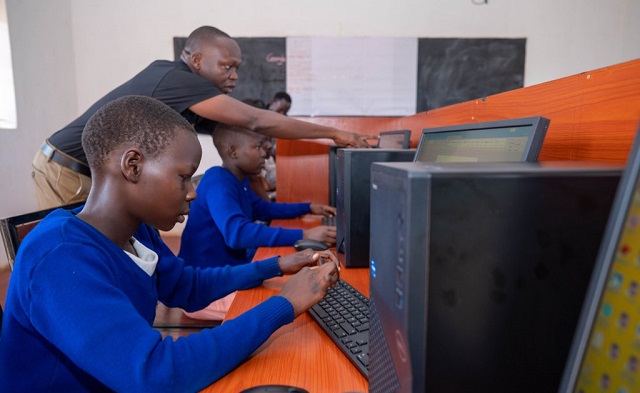Copyright The New York Times

For Hannah Mann, a mother of three who lives in Merchantville, N.J., the government shutdown is not an abstract political fight. Her family relies on federal food subsidies for groceries, including specialty formula for her newborn, who was born five weeks early, as well as a program that helps alleviate the cost of utility bills for low-income Americans. Those initiatives could run out of federal funding in days. “These are expenses that we cannot cover,” Ms. Mann said. The preemie formula alone is $50 a can. She said she was trying to eat more so she could produce more breast milk, but without food subsidies, that will be difficult as soon as next week. “It’s like a domino effect,” she said. As the shutdown nears the one-month mark, the lapse in federal funding is a looming crisis for vulnerable Americans who depend on government assistance for basic needs like groceries and heating. For nearly six million households that rely on a program that helps low-income Americans pay for energy costs, it means facing expensive heating bills and the possibility of utility shut-offs in the winter. And for many of the more than 65,000 children and families enrolled in 140 Head Start early-education programs across the country that depend on immediate federal funding, it means finding new child care options as early as next week. “What we’re doing is layering these losses on the most vulnerable in our society,” said Laura Justice, an expert in early-childhood cognitive development at Ohio State University. “These are families who, because they live in lower-income households, they’re already dealing with exacerbated stress in their daily lives.” The mounting impacts on the poorest Americans come as President Trump has used unorthodox methods to cover the salaries of active-duty military and federal law enforcement officials during the shutdown. While the administration dipped into customs revenue to fund WIC through October, officials said on Friday that they could not legally use existing contingency funding for SNAP. Some families that send their children to Head Start programs are already scrambling for backup. The funding lapse is set to first hit 140 Head Start programs that do not have money beyond October, said Tommy Sheridan, the deputy director of the National Head Start Association. (There are 3,300 Head Start programs nationally, and the majority are able to continue operating for now because they receive funding at different times during the year.) In Tallahassee, Fla., the Head Start program at the Capital Area Community Action Agency warned parents on Oct. 17 that they would need to find child care alternatives by Oct. 27 because the school was out of funds. The staff worked for free last week to give families time to make other plans. The program got a temporary reprieve thanks to an infusion of public and private funds the school was able to cobble together, said Nina Self, the interim chief executive officer of the Capital Area Community Action Agency, which includes the Head Start program. As of Tuesday, it will reopen — but it is not clear how many weeks it will last without federal funding, she said. “Let’s just get our Congress moving so we can get back to business,” Ms. Self said. Low-income older Americans are also facing shutdown-related challenges. About 6.5 million low-income adults age 60 and older rely on SNAP. And the layoffs of federal employees earlier this year have made it even harder for them to get through to a service representative at the Social Security Administration, said Cynthia Walker, the benefits coordinator for Benjamin Rose, a Cleveland-based nonprofit that assists aging adults. Many are in need of help with benefit verification, which service centers stopped doing when the funding lapsed. Without these documents, seniors can be at risk of losing housing subsidies. And as the weather turns colder, millions of families may not be able to count on the federal heating subsidy program to heat their homes. The Low Income Home Energy Assistance Program offsets the cost of high utility bills for low-income households. About 20 states are relying on leftover funding from the last fiscal year to sign up eligible households for heating assistance for the winter. But at least two, Utah and Wyoming, have already warned residents that they are no longer accepting new applications. While states typically begin distributing heating assistance in November or December, that is unlikely to happen this year even if the shutdown ends before the end of the month. The federal office that distributes the money has been hit with broad staff cuts as a result of Mr. Trump’s downsizing of the federal work force, said Mark Wolfe, the executive director of the National Energy Assistance Directors Association, which works with states to secure funding from the program. Relying on the federal government for basic needs is stressful enough, said Ms. Justice, the Ohio State professor. But the uncertainty around whether the programs will be available in a week — and for how long — can create a level of stress that might make some people want to give up, she said. “These are benefits that provide that lowest level of food, shelter, warmth,” she said. “We’re wiping out that level of security for an individual.” Barbie Anderson, a mother of three in rural New Hampshire, has been participating in WIC since she was pregnant with her first child, who is now 9. Though Ms. Anderson and her husband both work full time, her family lives paycheck to paycheck and monthly WIC benefits — $23 for produce and vouchers for dairy and eggs — help her make ends meet, she said. Without those benefits, Ms. Anderson anticipates forgoing more expensive items like milk and fresh oranges, her toddler’s favorite snack, and visiting food pantries. Congress, she said, is hurting working families like hers that have few federal programs to turn to, but make barely more than the income limits for other safety-net programs like SNAP. “We need this money,” she said. “I don’t know what it’s going to take for Congress to listen to us little people. It’s such a hard situation. Are they actually going to listen?” Many antipoverty programs, including WIC, were already in the cross hairs of Republicans in Washington before the shutdown began. Mr. Trump’s expansive domestic policy law that passed this summer cut SNAP funding by $186 billion over the next decade, in part by tightening eligibility and reducing benefits. Mr. Trump’s budget request, released in May, called for eliminating all funding for the home energy program and cutting more than $1 billion from WIC. Food banks across the country, which were already reporting an increase in need, are now bracing for a surge in demand as states have warned about the looming funding shortfall for SNAP and other programs.



